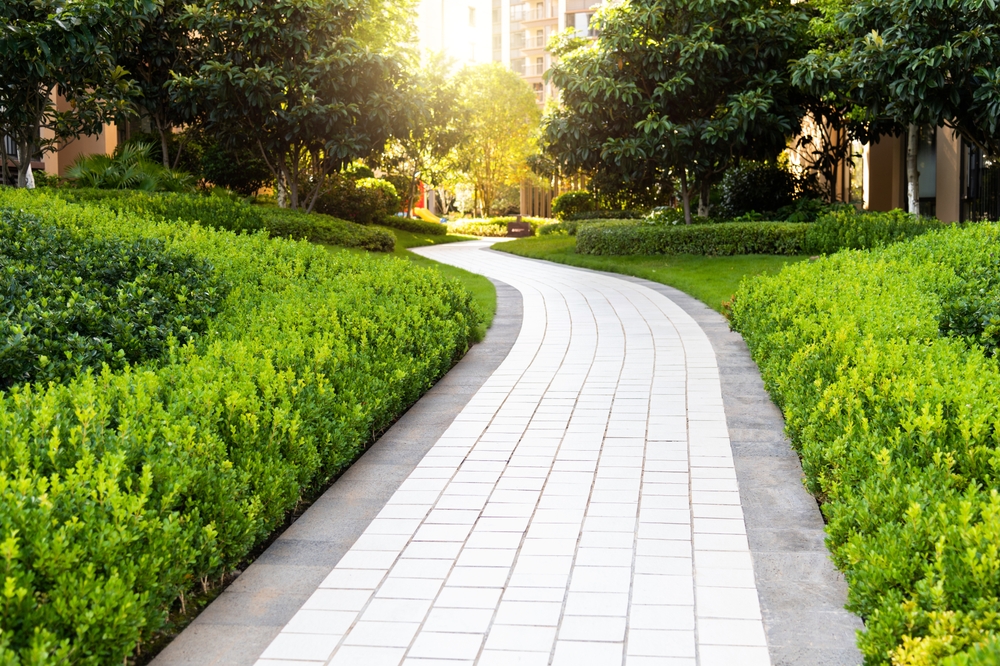
Whether your association is located in a drought-prone region or simply wants to reduce operating expenses, the right water-saving strategies can have an immediate and long-lasting impact. From landscaping adjustments to infrastructure upgrades, here’s how HOAs can reduce water usage and cut costs without compromising property appearance or resident satisfaction.
The U.S. National Centers for Environmental Information reports that over 13% of the country is experiencing moderate to extreme drought—and this number is trending upward. Many communities are already facing tighter water restrictions, and the demand for environmentally responsible practices is growing.
For HOAs, the pressure is twofold: meet environmental expectations while maintaining property values. A well-executed water conservation plan can help boards avoid rising utility expenses, remain in compliance with local regulations, and demonstrate a commitment to responsible community management.
Landscaping is one of the largest sources of water use for many HOAs. Fortunately, it also offers the most potential for savings. Many associations rely on automated irrigation systems, which—without careful monitoring—can waste a significant amount of water through runoff, leaks, or evaporation.
Reducing watering frequency, especially during cooler or rainier months, is one of the easiest and most effective ways to save water. During spring and early summer, many lawns can remain healthy with watering just once every two weeks. Your landscaping team can adjust schedules based on seasonal conditions to prevent overwatering.
Misaligned sprinklers that soak sidewalks, streets, or driveways are a common issue. Not only does this waste water, but it can also contribute to slip hazards and structural damage. Regular inspections of your irrigation system can ensure water is going where it’s needed—on the plants and not the pavement.
Even small leaks in sprinkler lines or irrigation systems can result in hundreds of gallons of wasted water per week. Include leak inspections as part of your landscaping vendor’s routine maintenance checklist. Investing in modern irrigation controllers with moisture sensors can also help reduce waste by watering only when needed.
Traditional turfgrass requires significant water to remain green, particularly in dry climates. Consider replacing portions of lawn with native plants, gravel, or xeriscaping—a landscaping approach that uses drought-tolerant plants and minimal irrigation.
While many governing documents require traditional lawns, boards can take steps to revise outdated landscaping rules. Updating the CC&Rs to allow for water-efficient alternatives gives homeowners greater flexibility and aligns with modern sustainability standards.
Applying mulch around trees and plant beds helps the soil retain moisture, reducing the need for frequent watering. Mulch also improves soil health, suppresses weeds, and protects plant roots from temperature extremes. This simple addition can extend the time between irrigation cycles, further supporting water conservation.
While landscaping is a key focus, HOAs should also look at broader operational opportunities to improve water efficiency.
Many local governments offer complimentary water usage audits or rebates for installing water-saving devices. Some municipalities provide free low-flow fixtures or incentives for converting to drought-tolerant landscaping. Contact your local water authority or utility company to see what programs are available.
A community water audit can help identify how and where water is being used—or wasted. By evaluating irrigation systems, plumbing infrastructure, and water usage patterns, your HOA can uncover opportunities for improvement and develop a comprehensive conservation plan.
Encouraging residents to take small steps can yield significant savings community-wide. The board can publish simple guidelines such as:
Educating homeowners about these practices, whether through a newsletter or community meeting, can foster a sense of shared responsibility and reduce total water consumption.
Engaging the community in sustainability efforts can drive participation and boost morale. Hosting a green event or partnering with a local conservation nonprofit to offer educational sessions is a great way to raise awareness and promote eco-friendly living.
Common areas like clubhouses, gyms, and pools may be using more water than necessary. Install motion-activated faucets, low-flow toilets, and water-efficient appliances in these facilities to cut utility bills without disrupting functionality. These small updates can pay off quickly in savings.
Rules that prohibit certain water-saving devices like rain barrels or restrict alternative landscaping may unintentionally limit conservation efforts. Review your governing documents to identify and revise any outdated regulations that could hinder sustainable living.
Providing clear guidelines on acceptable devices or landscaping alternatives can empower residents to reduce their water usage without violating community standards.
The benefits of smart water management go beyond reducing the monthly utility bill. Long-term, your HOA can:
Importantly, these efforts can also support a stronger resale value for homes in the community. Prospective buyers are increasingly interested in environmentally conscious communities, and water-efficient practices can be a strong selling point.
Water conservation is not just good for the environment—it’s good business for HOAs. By adopting water-efficient landscaping practices, maintaining irrigation systems, educating residents, and reevaluating outdated rules, associations can reduce costs and set a positive example for sustainable community living.
If your board is ready to take a more strategic approach to water management, Gordon James Realty can help. Our expert property management team offers guidance on sustainability planning, vendor coordination, and rule updates to help your HOA operate efficiently and responsibly. Learn more about our HOA management services and contact us today to get started.

Explore 10 essential traits that help HOA board members lead effectively, foster trust, and make sound decisions for their communities.

Explore practical and creative HOA landscaping ideas that enhance curb appeal, boost resident satisfaction, and fit your community’s budget.
We're proud to make partnering with us easy. Contact our team to connect with one of our industry experts and get started today.